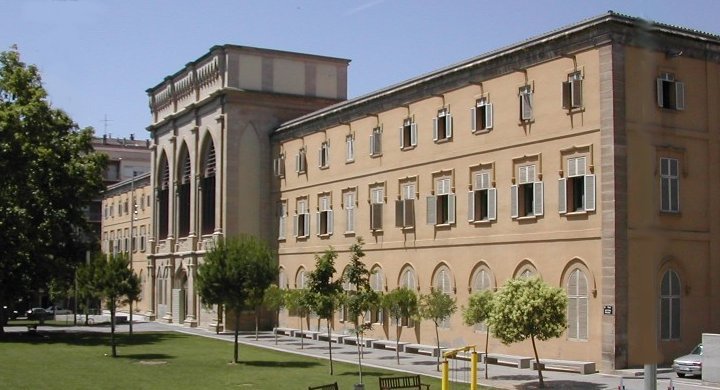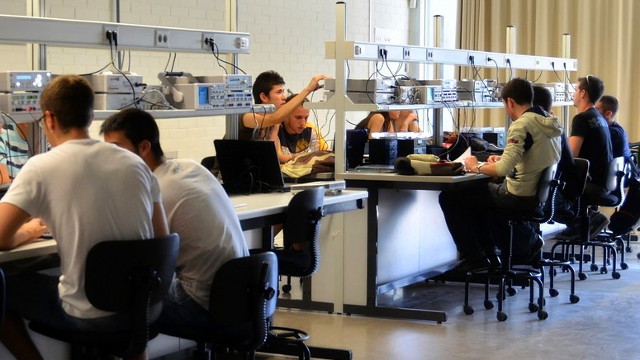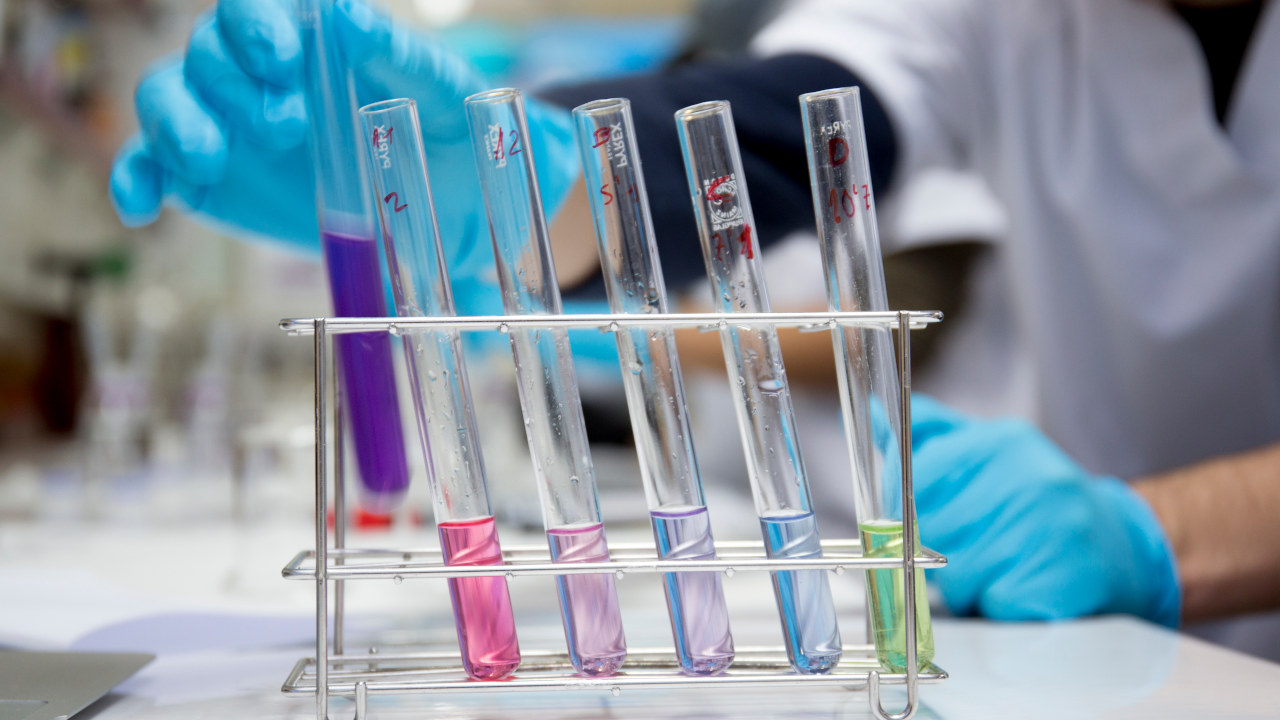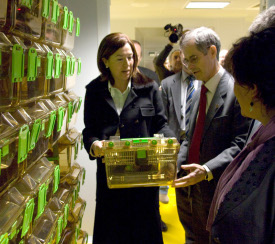17th march 2009
Download pdfThe new building for Biomedicine will receive 4 million Euros in funding and will be finished in 2010
This announcement coincided with the confirmation that the degree in Biomedicine will be taught at UdL next academic year. In Palmada’s words, this is "an ambitious and legitimate endeavour from the University of Lleida". The Commissioner opened the new anatomy room at the Faculty of Medicine and the second biggest animal room housing rodents in Catalonia, which is located in the annex module of the Teaching Unit at the Faculty of Medicine.
The animal room will result in an improvement in both research and teaching in the Biomedicine area. It will be able to host over 60,000 animals, most of which will be genetically modified.
This high level equipment will allow research groups at UdL and the Lleida Biomedical Research Institute to advance in their research on several diseases (diabetes, cancer, Amyotrophic Lateral Sclerosis, Alzheimer, Parkinson, etc.), experiment with stem cells, and test on drugs before they going out into the market. These facilities will also make it possible to carry out studies on nutrition and food technology in collaboration with the School of Agricultural Engineering (ETSEA).
The animal room has an area of 1,200 square metres, which are distributed in two floors. It includes normal housing zones, zones for pathogen-free animals, laboratories, a quarantine area, operating rooms, necropsy rooms, a cleaning area with a special air shower, warehouses and a technical control area. There will be high safety measures to avoid contamination from both rodents and research works.
There will be especially improved systems for ventilation and preservation of bodies in refrigerated chambers. The room has laminar flow devices on dissection tables that propel formol vapours towards the extractor fans located under the counter. Besides the refrigerated and freezing chambers, they also include a crane to transport bodies, a propelled carrier, a peristaltic pump and a bone-cutting saw..
The new anatomy room at the Health Sciences campus is divided into two spaces: one for the preparation of bodies and another for student practices. The latter has four fixed tables and a rotating one. Medicine students will carry out their practices in six groups of 20 people each.




